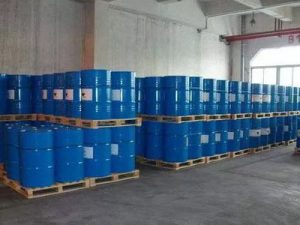Iron-catalyzed zincation of terminal alkynyl vinyls
Organozinc reagents are among the most commonly used metal reagents in modern synthetic chemistry. Carbon-zincification of alkynes is an important method for the synthesis of organozinc reagents, but problems such as the inability to tolerate the hydrogen of the terminal alkynes and the difficulty of converting the introduced carbon groups are common, which severely limit the application of this reaction. Catalytic vinyl zincation of alkynes, which can introduce easily transformable alkenyl and zinc at both ends of the alkynes simultaneously, has important application potential in synthesis. However, multiple challenges need to be overcome to achieve the vinyl zincation reaction of terminal alkynes: (1) the acidic hydrogen of the terminal alkynes is capable of quenching the catalyst or undergoing a displacement reaction with the zinc reagent; (2) the terminal alkynes are susceptible to dimerization under the action of transition metal catalysts to generate alkenyl compounds; (3) the alkenyl zinc products may further undergo alkenyl zincation with the alkynes to generate alkenyl zwitterion products; and (4) the zinc reagent under transition metal catalyzed by zinc reagents may generate free radicals, leading to the difficulty of controlling the stereoselectivity of the reaction.

Recently, Shoufei Zhu’s group at the School of Chemistry, Nankai University, developed a 1,10-phenanthroline-imine ligand-modified iron catalyst, which realized for the first time the challenging vinyl zincation of terminal alkynes, providing a new and efficient method for the synthesis of organozinc reagents and polysubstituted conjugated olefins. With very good functional group tolerance and substrate universality, this reaction was successfully used for the facile synthesis of important bioactive molecules such as vitamin A, which significantly improved the synthesis efficiency. The research results were recently published in J. Am. Chem. Soc. and selected as JACS Spotlights by the editors, and Dr. Qiang Huang was the first author of this paper.
Catalytic zincation of terminal alkynyl vinyls
It has been found that iron complexes of o-phenanthroline-imines exhibit high catalytic activity in model reactions, especially catalysts C1-C3 with a large-site-resistance 2,4,6-triisopropyl group at the 9-position of the o-phenanthroline backbone, and catalyst C6 with a 2,4,6-trimethyl group can afford vinyl zincation products in near-quantitative yields and with a single regioselective and stereoselective character.2 Other tridentate ligands, bidentate nitrogen ligands, monophosphine ligands and bisphosphine ligands do not give good results. The activity and selectivity of the reaction were significantly reduced by replacing the center metal iron in the C3 catalyst with other metals.
Reaction optimization

Under optimal conditions, the researchers examined the substrate range. The reaction had good functional group tolerance with methoxy, amine, silyl, sulfhydryl, ester, acyl, amide, cyano, sulfone, acetal, trifluoromethyl, and halogen. Alkynyl substrates with functional groups with active protons (-NHMe, -OH) also react smoothly. Thick ring substituted acetylenes (2-naphthylacetylene) and aromatic heterocyclic substituted acetylenes (furan, thiophene, pyridine, indole substituted acetylenes) give equally good results. In addition to vinyl zinc, other alkenyl zincs can be used in this reaction, with β-alkyl, α-alkyl, di-alkyl, and aryl-substituted vinyl zinc reagents being less reactive in that order.
Iron-catalyzed alkenyl zincation of aryl-terminated alkynes

In addition to aryl-substituted terminal alkynes, conjugated alkynes, aliphatic terminal alkynes, and functionalized alkynes are also able to undergo vinyl zincation smoothly under the promotion of iron catalysts to give the corresponding products in high yields and with high regioselectivity and stereoselectivity.
Iron-catalyzed vinyl zincation of other terminal alkynes
The reaction shows good functional group tolerance and can be used in the late modification of multifunctionalized drug molecules. Rivaroxaban, dronedarone, febuxostat, duloxetine, estrone and onyx derivatives were able to give the corresponding vinyl zincated products 2ga-2gf in good to high yields and excellent selectivity.
Late modification of drug molecules
The method has a good potential for application in synthesis. The C-Zn bond in the product can undergo a series of transformations including alkylation, arylation, allylation, alkynylation and addition reactions to efficiently generate a wide range of polysubstituted conjugated olefins. The reaction has also been successfully applied to the efficient and highly selective synthesis of a variety of bioactive molecules, including vitamin A and its derivatives, with a significant improvement in synthetic efficiency compared to literature methods.
Application of iron-catalyzed vinyl zincation reaction
The researchers conducted a systematic study of the mechanism: the structure of the organozinc product was characterized; it was found that the hydrogen of the terminal alkynes readily undergoes an exchange reaction with the zinc reagent, and the iron catalyst inhibits this background reaction; deuterium band labeling experiments showed that neither the substrate nor the product is H-D exchanged for vinyl zinc reducing the Fe(II) precursor to the Fe(I) activated catalyst. dft calculations showed that the activated iron species is in the open-shell-layer quaternary state (S = 3/2) manner to catalyze the reaction; the β-addition activation energy (10.9 kcal/mol

